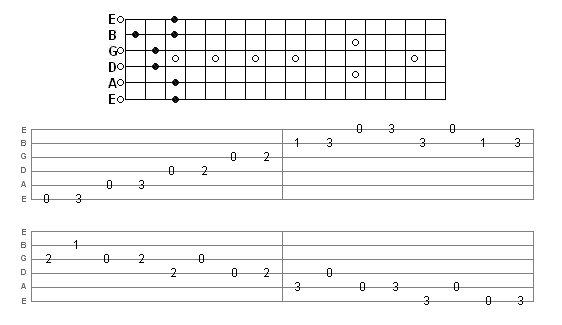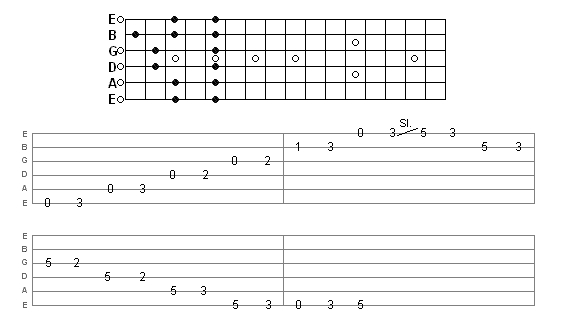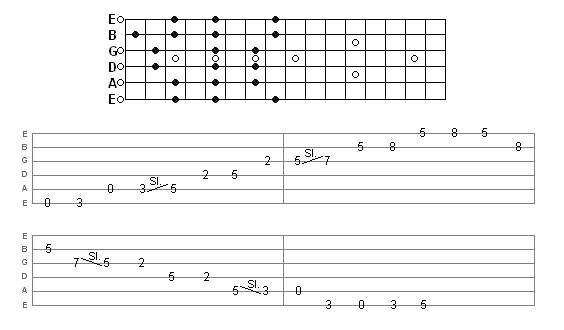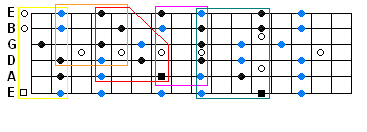Blog Archives
Using Minor Pentatonic Over Non-relative Major Chord Progression
Recently, I was messing around with different riffs while playing against some new backing tracks I found. I was playing around in the key of A major and the F# minor pentatonic just wasn’t sounding right to me. It was missing something. Oddly, at the moment, I had a melody pop in my head that sounded good with the backing track. As I started hammering it out on the guitar, I realized I was playing the A minor pentatonic over the A major chord progression and it sounded perfect!
As I played on, I couldn’t believe what I was hearing. This totally blew all the rules of music theory out the window as I should have been playing F#m over A or Am over C. I dug into it a little further and found something very interesting. A major and C major have all the same notes except three in common; F#, C#, and G#. Because of the rest of the notes being common, my ear couldn’t tell the difference. The three that were not in common added just enough tension that my ear wanted to hear so it sounded better with that tension than without.
Below is the riff I came up with. It’s a six bar version of the 12 bar blues progression. I recorded several different strummings with the same chords and played the riff against them all. None of them sounded like they didn’t belong together.
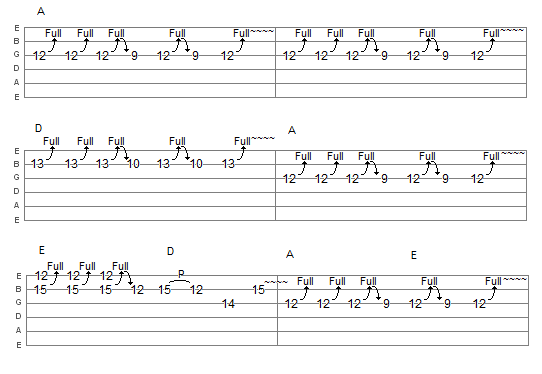
Give the riff a try. If you can, record the chord progression as I have labeled and play the riff against it. Or, try your own combinations. See if a C# minor pentatonic scale sounds good over a C# major chord progression. You may find, as I did, the possibilities are endless and it will give you a new sound.
Test Your Skills – Perfecting Your Technique (Part 2)
While teaching the pentatonic scales, it seems as though it leaves my students wondering “what next?” Well, here’s a few skill builders to show you why and how the pentatonic boxes connect. We’ll be in the key of C. To start, let’s take a look at the pentatonic box 3…or the E Phrygian scale.
Below is a simple skill builder starting at the top of the neck. Most instructors should tell you not to focus on playing scales from bottom to top in formation. While this one goes from bottom to top and back down again, it’s the way it comes back down that’s unique. Notice the pattern is in-line while going up the scale, but it’s altered coming down. This trains your mind to think…”outside ‘the box'”…excuse the pun.
One of the most difficult concepts to teach, as well as understand, is how the pentatonic boxes fit together. This next skill builder shows how to use a slide at the end to bring you from the E Phrygian scale to the G Mixolydian scale on the way back down.
Let’s take this a step further. First, we won’t be going up, we’ll be coming down. Second, we’ll be using the E Phrygian scale, the G Mixolydian scale, and the A Aeolian scale…or the minor pentatonic scale.
If you look at the fretboard diagram, you can see how we added the bottom part of each pentatonic to the previous one. This is because the bottom of each pentatonic is the top of the one we’re adding. In the example above, you can see where we transitioned between the scales by using slides. While this isn’t the perfect demonstration, it does show how you can merge three pentatonic scales together. Knowing your scale patterns and how they all fit together will help you play up and down the neck of the guitar with little effort.


